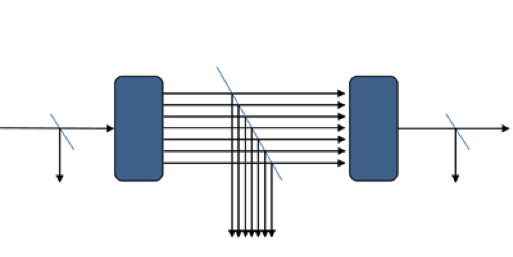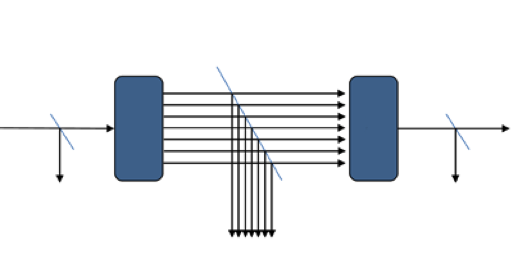Send in the Clones
If it was possible to make perfect copies of photons, the tools of quantum entanglement would allow information to be sent to another location faster than the speed of light. Everything we know tells us this is impossible, hence the existence of the “no-cloning” theorem. But do all the imperfect copies of a photon collectively retain complete information about the original photon? In a paper in Physical Review Letters, Sadegh Raeisi at the University of Calgary, Canada, and colleagues propose an experiment to test this notion, and suggest how this might offer improved measurements that rely on quantum detection methods.
Raeisi et al. imagine taking an entangled pair of photons and sending one of them through what is called a parametric down-converter—essentially, a xerox machine in the quantum information business. One photon entering this device is converted into two or more photons that are clones. This process can also be inverted: sending all the clones into the parametric converter and running it in reverse will generate one output photon. The authors then show that the entanglement of the two photons at the start of the process is identical to the entanglement between the unconverted original photon and the photon emitted after inverse cloning. In other words, quantum information is preserved as the input photon is split into many imperfect copies and then recombined into a single photon again.
While still theoretical, this coherent cloning and uncloning could be tested in practice, and confirmation would show that coherent entanglement from the microworld (one photon) to the macroworld (many photons) is possible, a long-sought and intensely debated phenomenon. Raeisi et al. also show that this work might be used in optical imaging: a low-contrast sample could be placed in between the cloner and the uncloner, leading to changes in entanglement that allow exquisitely sensitive measurements of photon transmission. – David Voss





